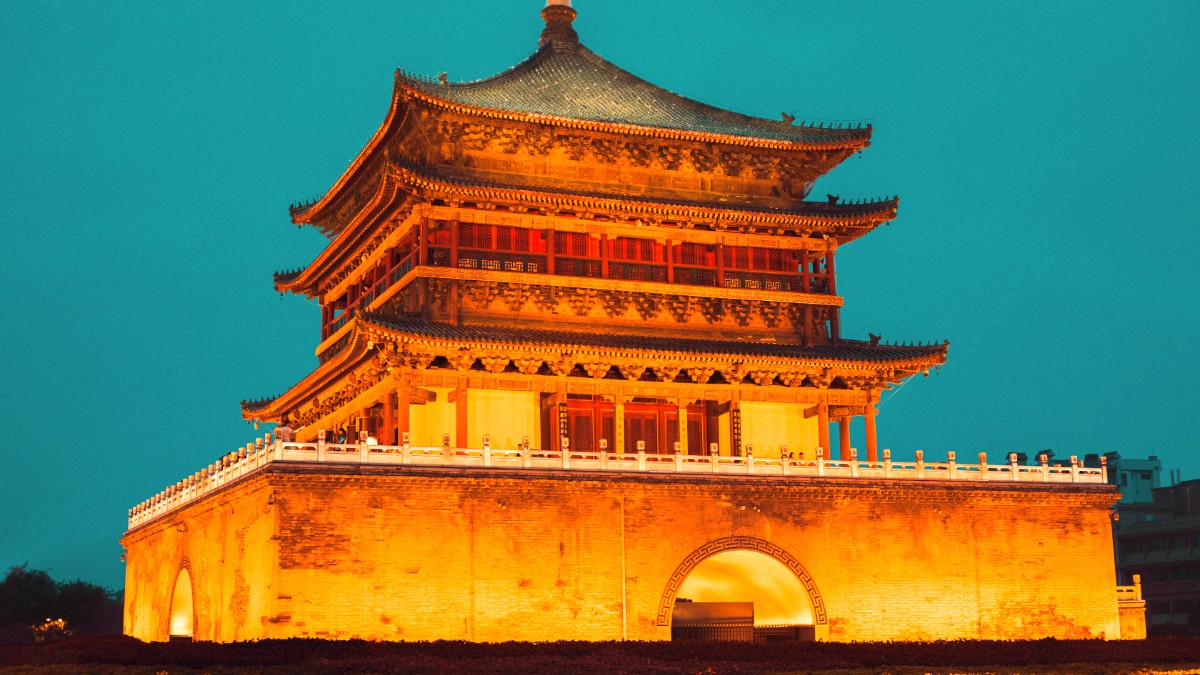
Shaanxi Shanxi, China
Xi'an's food is deeply rooted in Northwestern Chinese culinary traditions. Its historical role as the eastern terminus of the Silk Road meant a constant flow of ingredients, cooking techniques, and people from Central Asia and the Middle East.
This influence is visible in the city's large Hui (Muslim) population, whose dietary laws and cooking styles have shaped many local specialties. The cuisine contrasts with the rice-based dishes of southern China, prioritizing wheat as its staple. The food is generally savory, often spicy, and aromatic, with frequent use of cumin, star anise, and peppercorns.
This cuisine is halal. It emphasizes lamb and beef. Many dishes feature slow-cooked stews, roasted meats, and flavorful broths. The Muslim Quarter is the place to experience authentic Hui cuisine.
Incorporates more pork and a wider range of cooking methods, often involving stir-frying, steaming, and braising. While Xi'an is known for its Hui influence, traditional Han dishes are widely available.
Dishes are typically shared communal style. Slurping noodles is acceptable. Tipping is generally not customary. Choose busy places with a high turnover of customers for better hygiene confidence.
Often called the "Chinese hamburger." Shredded stewed pork (or beef/lamb in Muslim eateries) seasoned with spices, stuffed into a crispy, oven-baked flatbread (mo). Widely available at street stalls and small eateries across the city, especially in the Muslim Quarter.
Find it: Muslim Quarter street stalls
Lamb or beef bread in soup. A hearty and flavorful dish with lamb or beef broth and pieces of unleavened bread (mo) that you tear into small bits before adding them to the soup. A comforting and filling meal.
Find it: Specialized Paomo restaurants, many in the Muslim Quarter
Famous for its name, derived from the sound the wide, hand-pulled noodles make. These thick, chewy noodles are often served with spicy oil, chili, garlic, spring onions, and various toppings. Found in numerous noodle shops throughout the city.
Find it: Noodle shops across the city
Tsingtao and Snow beers are widely available. Baijiu is a strong Chinese liquor, often consumed in social settings.
Green tea and jasmine tea are commonly offered. Freshly squeezed pomegranate juice is a refreshing drink, especially in autumn.
Luxury hotels host fine dining restaurants serving Cantonese, Sichuan, and international dishes. Independent restaurants focus on refined local or regional Chinese cuisine, often with elegant decor. These are in modern commercial districts or around the city center.
Abundant throughout the city, these establishments have a wide variety of Chinese cuisines. You will find places specializing in local Shaanxi dishes, as well as popular Sichuan, Hunan, and Cantonese options. These restaurants provide a comfortable dining experience, good service, and reasonable prices. Many have English menus or picture menus.
The Muslim Quarter is the epicenter for street food and local Hui cuisine. This bustling area contains thousands of stalls. Night Markets throughout the city offer a lively atmosphere. Small noodle shops/dumpling houses are on almost every street corner, offering authentic and affordable meals.
A well-known night market offering a wide selection of local snacks and dishes.
Popular for evening dining and socializing.
Located within the Muslim Quarter, this street is famous for its concentration of food stalls and small eateries.
A prime spot for diverse street food experiences.
International buffets and specific international restaurants (e.g., Italian, Japanese, Western).
Gaoxin District has a growing number of standalone restaurants (Korean, Japanese, Western, Indian).
Italian and American food choices are present.
Korean and Japanese fare can be found.
This is very difficult to ensure. Wheat is a staple. Cross-contamination is common. Travelers with severe gluten allergies or celiac disease should exercise extreme caution. Focus on naturally gluten-free options like plain rice or simple stir-fried vegetables.
Carry translation cards.
For other severe allergies (e.g., nuts, shellfish), clear communication is needed. Pre-written allergy cards in Chinese are helpful. Stick to simpler dishes where ingredients are visible.
Translation apps are your friend.
While navigating dietary restrictions needs preparation, the variety of food in Xi'a means you can still enjoy delicious meals with careful planning.
Cultural differences in food preparation and understanding of dietary terms can lead to misunderstandings. Patience and polite persistence are beneficial.
Local tour operators and guesthouses offer cooking classes focused on Xi'a specialties like dumplings or Roujiamo. These often include a market visit to select ingredients, a hands-on cultural experience.
Highly recommended, especially in the Muslim Quarter. Guided food tours take you through bustling streets, introducing you to various street food specialties and local eateries. A local guide helps you navigate, order, and understand the flavors.
Less common as organized tourist activities directly from Xi'a city. Arranging visits to local farms or food producers in surrounding rural areas might be possible through specialized tour companies or private guides.
Don't hesitate to ask locals for their favorite spots; this often leads to the best culinary discoveries.
Smile and point to order.
From street food to elegantly plated dishes, Xi'an's food scene photography worthy.
Share your delicious experiences.
Experience a palette ranging from sour and spicy to rich and savory, reflecting diverse culinary influences.
Observe how wheat is transformed into various noodles, breads, and dumplings, central to local diets.
Participate in the communal dining style, a social and engaging way to enjoy meals with others.
Exploring Xi'an's culinary landscape is an adventure. Some tips for a delightful experience.